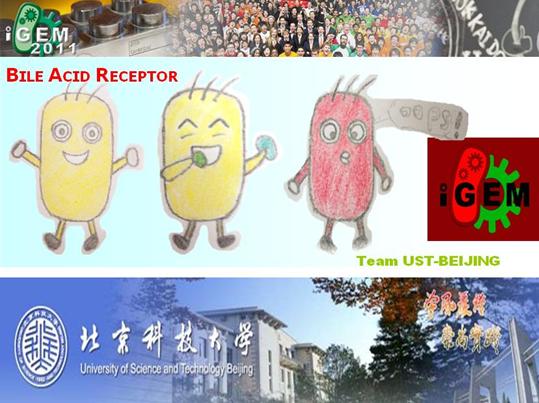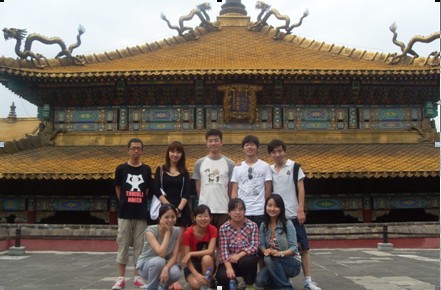Team:UST-Beijing/Project
From 2011.igem.org
| You can write a background of your team here. Give us a background of your team, the members, etc. Or tell us more about something of your choosing. | |
|
Gene H-transfer: bile acid receptor in E.coli & proteorhodpsin in mitochindrial inner membrane
| |
| Team Example |
| Home | Team | Official Team Profile | Project | Parts Submitted to the Registry | Modeling | Notebook | Safety | Attributions |
|---|
Contents |
We are engineering a bile acid sensor in E.coli and others
Using lacI DNA-binding domain and LXRbeta ligand-binding domain, we made an artificial bile acid receptor which can regulate expression of target gene within a natural lacI operon. As proof of principle, we
demonstrate that regulation of bacteria gene expression by host eukaryocyte metabolites is achievable using chimeric nuclear receptors. Through directed molecular evolution, a harmonious signal network regulating metabolism of both prokaryocytes and their host eukaryocytes in the digestive tract is feasible.
| PR,which is a abbreviation of proteorhodopsin, was discovered in 2000 through shortgun sequencing of seawater off the coast of California. It is a a kind of menbrane proteins that generates a proton motive force(pmf) that can be used for adenosine triphosphate (ATP) synthesis as a light-activated proton pump. In our experiment, we replaced the PR’s precusor sequence with that of cytochrome oxidase subunit 4 isoform 1, mitochondrial precursor (Homo sapiens). So PR can be fixed in the inner membrane of mitochrondria. Meanwhile, all the codons are optimized according to codon usage bias for Homo sspiens. Then, the gene of PR is constructed in pSG5 vector for eukaryotic expression.
Functional PR requires the covalent binding of retinal, which is synthesized from beta-carotene. | |
 "
"


